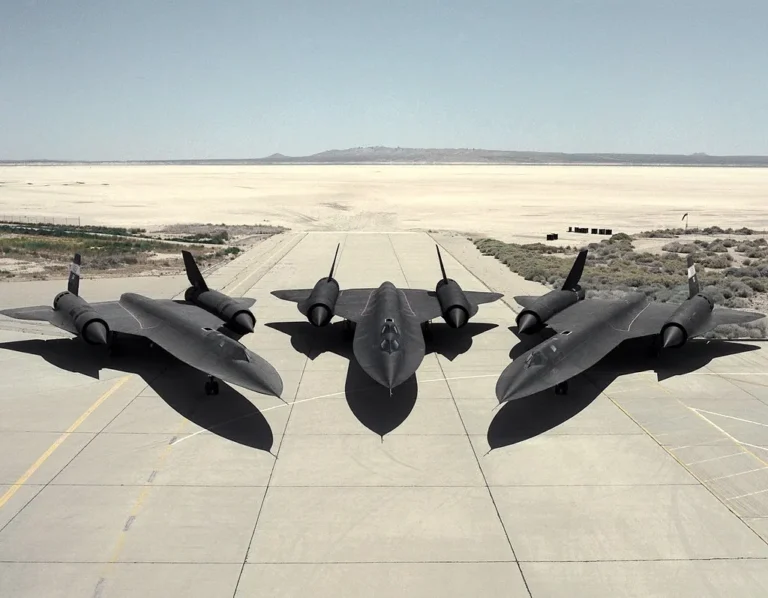When it comes to breaking the sound barrier, military aviation has always been where engineers throw caution to the wind and ask, “How fast can we make this thing go without it disintegrating?”
Since Chuck Yeager first punched through Mach 1 in 1947, the quest for speed has produced some truly remarkable flying machines that make modern sports cars look like they’re standing still.

Fastest Military Aircraft in History
Here we will discuss the top 10 Fastest Military Aircraft ever built!
10. Bell X-1 “Glamorous Glennis” (Mach 1.06)
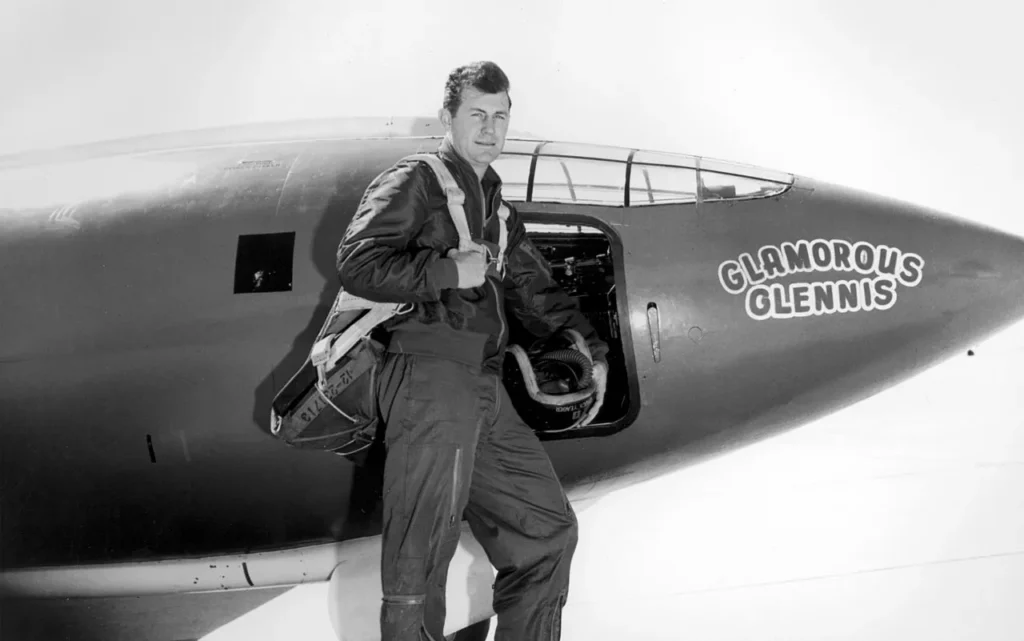
The Bell X-1 wasn’t just an aircraft; it was a flying bullet with wings and a very brave pilot inside. On October 14, 1947, Chuck Yeager climbed into this rocket-powered experimental aircraft and made aviation history by becoming the first person to officially break the sound barrier.
Dropped from a B-29 bomber at altitude, the X-1 reached Mach 1.06 (1,100 km/h) in a flight that lasted mere minutes but changed aviation forever!
The X-1’s design was revolutionary for its time, featuring a bullet-shaped fuselage inspired by 0.50-calibre ammunition. The theory being that if bullets could go supersonic, so could aeroplanes.
Its rocket engine burned a mixture of liquid oxygen and ethyl alcohol, providing the thrust needed to punch through the sound barrier that many believed was an impenetrable wall.
9. F-22 Raptor (Mach 2.0)

The F-22 Raptor represents the pinnacle of modern fighter design, proving that speed isn’t everything when you’re invisible to radar.
Developed by Lockheed Martin at a staggering cost of $350 million per aircraft, the Raptor can reach speeds of 2,470 km/h (Mach 2) while maintaining stealth characteristics that make it nearly undetectable.
What sets the F-22 apart isn’t just its speed, but its incredible manoeuvrability and advanced avionics. Its twin Pratt & Whitney F119 engines feature thrust vectoring, allowing the aircraft to perform manoeuvres that seem to defy physics.
The Raptor can supercruise—maintain supersonic speeds without afterburners, making it both fast and fuel-efficient. Only 195 were ever built, making each one more precious than a rare gemstone.
8. Mirage 2000 (Mach 2.2)
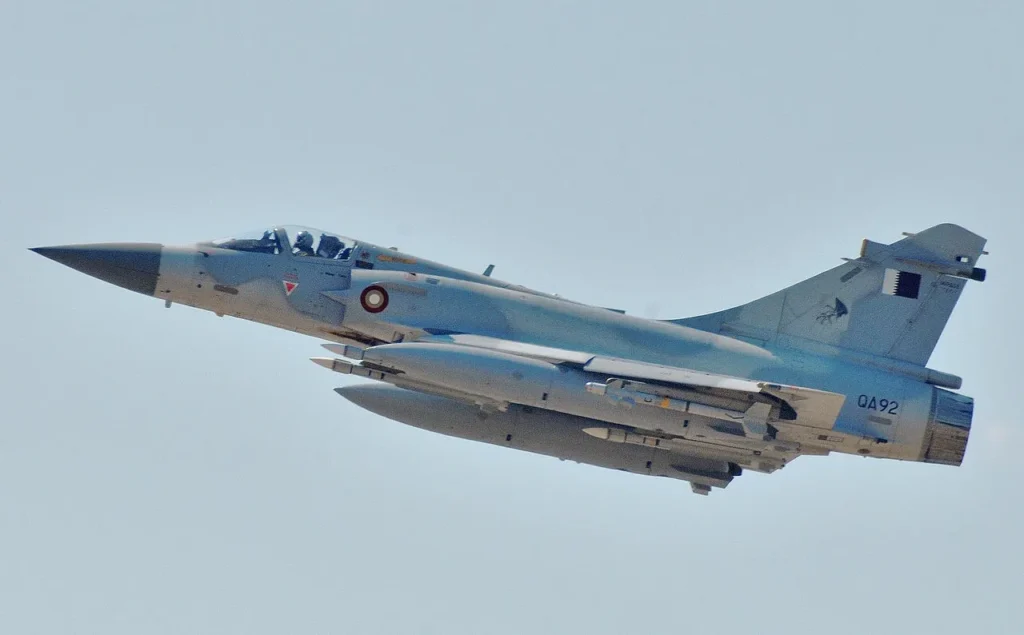
France’s Dassault Mirage 2000 proved that European engineering could hold its own in the supersonic club. Entering service in 1984, this sleek delta-wing fighter can reach Mach 2.2 (2,700 km/h) powered by a single SNECMA M53 afterburning turbofan engine.
Its distinctive triangular wing design provides excellent high-speed performance while maintaining good low-speed handling characteristics.
Over 600 Mirage 2000s have been produced, serving air forces around the world.
The aircraft’s relatively simple design philosophy—one engine, straightforward systems—made it reliable and cost-effective compared to its twin-engine contemporaries. Its combat record in various conflicts has proven that French engineering excellence extends far beyond perfume and wine.
7. MiG-29 Fulcrum (Mach 2.3)
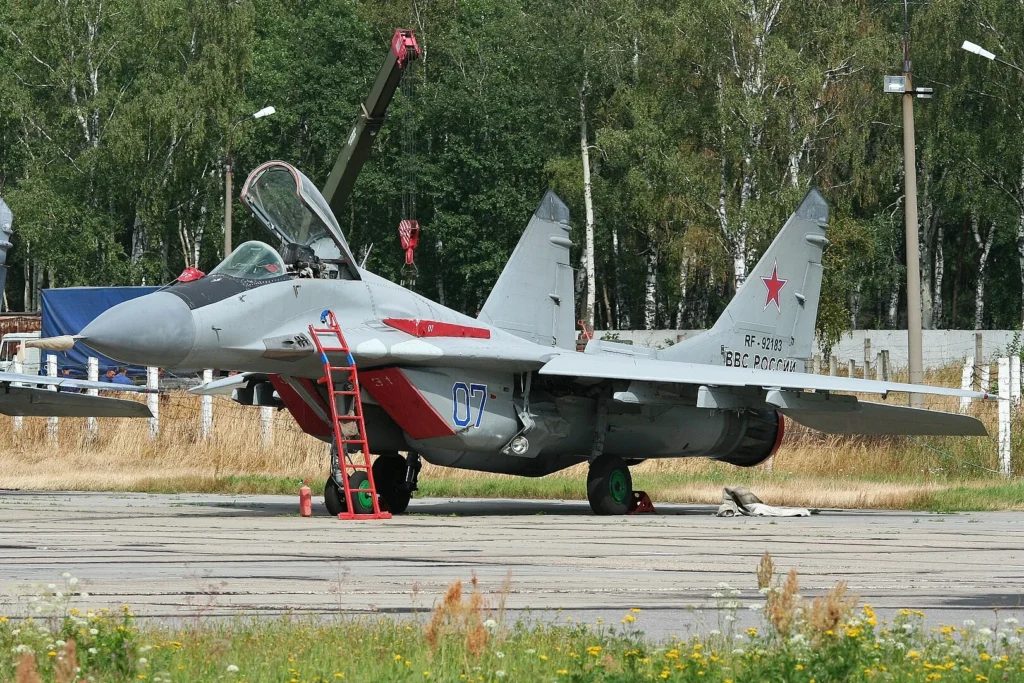
The MiG-29 Fulcrum first took flight in 1977 as the Soviet answer to American F-15s and F-16s. Capable of reaching Mach 2.3 (2,850 km/h), this twin-engine fighter was designed with one goal in mind: shoot down NATO aircraft before they knew what hit them.
Its distinctive twin-tail design and powerful Klimov RD-33 engines give it impressive acceleration and climb rate.
What made the MiG-29 particularly dangerous was its combination of speed and agility. Soviet engineers prioritised manoeuvrability alongside raw velocity, creating an aircraft that could not only catch its targets but also outfight them in close combat.
The Fulcrum’s helmet-mounted sight system was years ahead of Western equivalents, allowing pilots to lock onto targets simply by looking at them.
6. Su-27 Flanker (Mach 2.35)
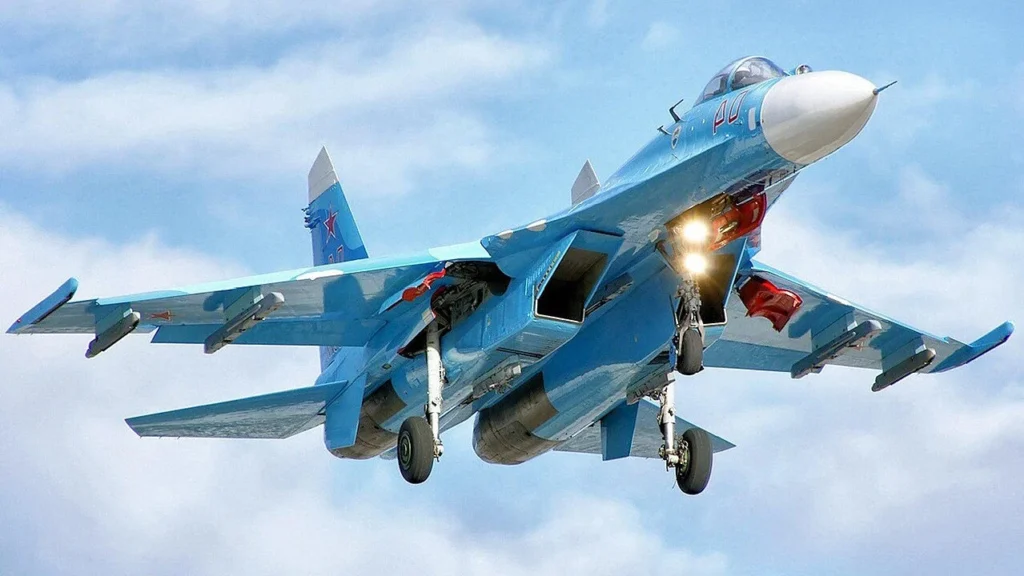
The Sukhoi Su-27 Flanker, also debuting in 1977, represents Soviet aerodynamic artistry at its finest. This graceful fighter can reach Mach 2.35 (2,900 km/h) while maintaining exceptional manoeuvrability that has impressed pilots and engineers worldwide.
Its twin Saturn AL-31F engines provide enormous thrust, while its large wing area gives it outstanding performance at all speeds.
The Su-27’s design philosophy emphasised air superiority above all else. With its long range, powerful radar, and ability to carry up to 10 air-to-air missiles, it was built to dominate the skies over vast distances.
The aircraft’s unstable design requires computer assistance to fly, but this instability is what gives it such remarkable agility. Many consider the Flanker one of the most beautiful fighters ever built.
5. F-15 Eagle (Mach 2.5)

The McDonnell Douglas F-15 Eagle, developed in the late 1960s, became the backbone of American air superiority with its Mach 2.5 capability. This twin-engine fighter was designed with one overriding principle: not a pound for air-to-ground.
The Eagle was built purely for air combat, and its record speaks for itself—over 100 aerial victories with zero losses in air-to-air combat.
Powered by two Pratt & Whitney F100 engines, the F-15 can accelerate from takeoff to Mach 2.5 in under two and a half minutes. Its advanced radar and weapons systems, combined with superior pilot training, created an almost unbeatable combination.
The Eagle’s large wing area and powerful engines give it a thrust-to-weight ratio greater than 1:1, meaning it can accelerate while climbing straight up.
4. MiG-31 Foxhound (Mach 2.83)
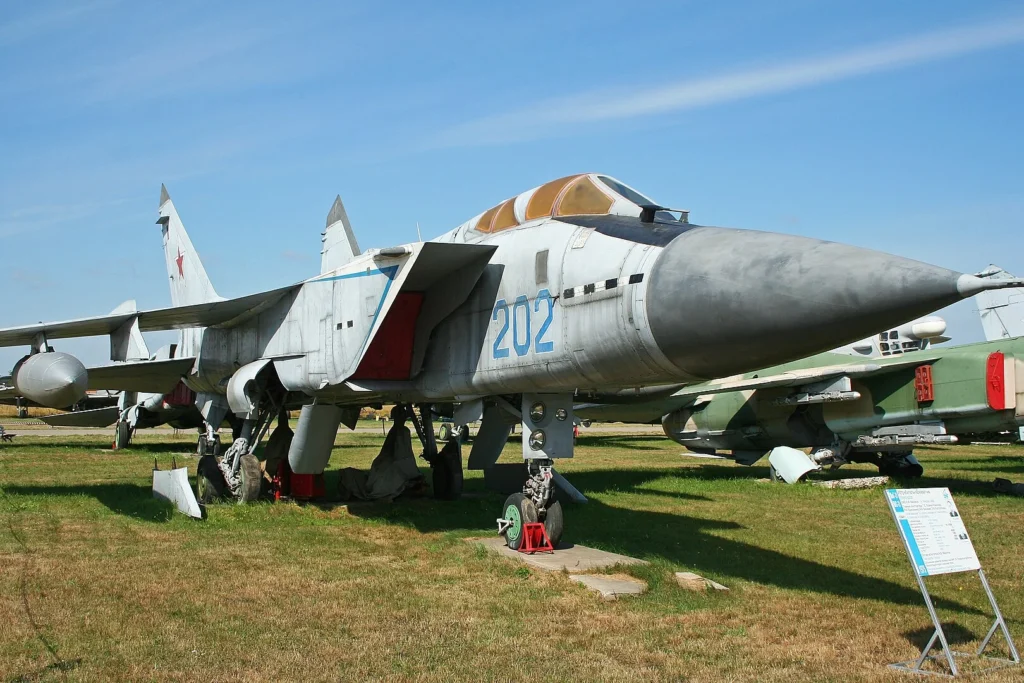
The MiG-31 Foxhound, introduced in 1981, is a massive interceptor designed to catch and destroy anything flying in Soviet airspace.
Capable of reaching Mach 2.83 (3,500 km/h), this two-seat aircraft is powered by twin Soloviev D-30F6 engines that produce enormous thrust. Over 500 units were built, making it one of the most successful high-speed interceptors ever produced.
What makes the MiG-31 unique is its ability to maintain high speeds while carrying a full weapons load. Its powerful Zaslon radar can track multiple targets simultaneously at ranges exceeding 200 kilometres.
The Foxhound was specifically designed to intercept high-speed, high-altitude targets like the SR-71 Blackbird, and its performance capabilities suggest it might have been successful in that role.
3. MiG-25 Foxbat (Mach 3.2)
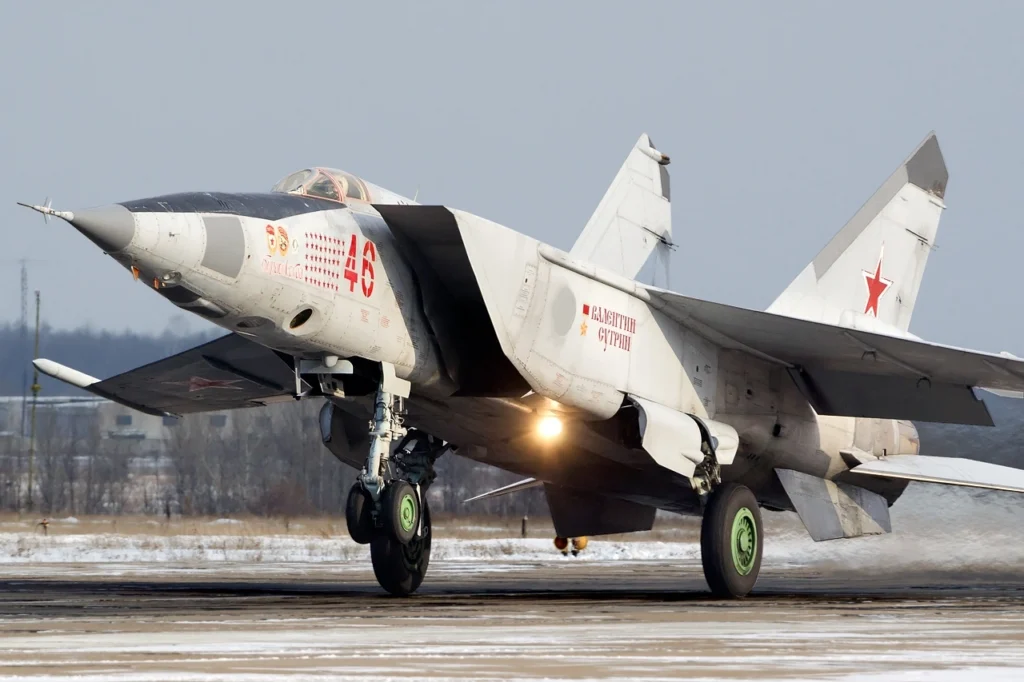
The MiG-25 Foxbat shocked the Western world when it was first observed in the 1960s. Capable of reaching Mach 3.2 (3,400 km/h) at high altitudes, this interceptor was built like a flying tank, constructed primarily of stainless steel to withstand the enormous heat generated at such speeds.
Over 1,100 units were produced, making it one of the most numerous Mach 3-capable aircraft ever built.
The Foxbat’s twin Tumansky R-15 engines were essentially modified cruise missile engines, providing the enormous thrust needed to reach such incredible speeds.
However, this speed came at a cost—the engines had very short lifespans, and the aircraft had limited manoeuvrability. But for its intended role of intercepting high-altitude bombers and reconnaissance aircraft, raw speed was more important than agility.
2. SR-71 Blackbird (Mach 3.32)

The Lockheed SR-71 Blackbird remains one of the most iconic aircraft ever built. This reconnaissance aircraft could cruise at Mach 3.32 (3,600 km/h) for hours, making it virtually untouchable by enemy defences.
Its unique design, constructed primarily of titanium, was so advanced that it seemed to come from another planet.
The Blackbird’s Pratt & Whitney J58 engines were marvels of engineering, functioning as both turbojet and ramjet engines depending on speed.
At maximum velocity, the aircraft would stretch several inches due to heat expansion, and its fuel tanks were designed to leak on the ground, only sealing when the aircraft reached operating temperature.
Flying the SR-71 required special pressure suits and training, as it operated at altitudes where the sky turned black and the curvature of Earth was visible.
1. X-15 (Mach 5.9) and X-43 (Mach 9.6)

The North American X-15 and NASA X-43 represent the absolute pinnacle of speed achievement in atmospheric flight. The X-15, a rocket-powered research aircraft, reached Mach 5.9 (7,300 km/h) in the 1960s, while the unmanned X-43 achieved an incredible Mach 9.6 (10,240 km/h) using scramjet technology.
The X-15 was more spacecraft than aircraft, requiring pilots to wear pressure suits and operate at altitudes where traditional flight controls were useless. Its rocket engine burned ammonia and liquid oxygen, providing thrust in the near-vacuum of space.
The X-43, meanwhile, used a scramjet engine that breathed the supersonic airflow, representing a completely new approach to hypersonic flight that may one day enable single-stage-to-orbit spacecraft.

Bottom Line
From Chuck Yeager’s historic barrier-breaking flight to vehicles that blur the line between aircraft and spacecraft, these 10 machines represent humanity’s relentless pursuit of speed.
While modern fighters may prioritise stealth over raw velocity, the lessons learned from these speed demons continue to influence aerospace design. After all, in aviation, there’s still no replacement for displacement—or in this case, sheer, unadulterated, physics-defying speed!
Stay tuned with us. Further, follow us on social media for the latest updates.
Join us on Telegram Group for the Latest Aviation Updates. Subsequently, follow us on Google News

